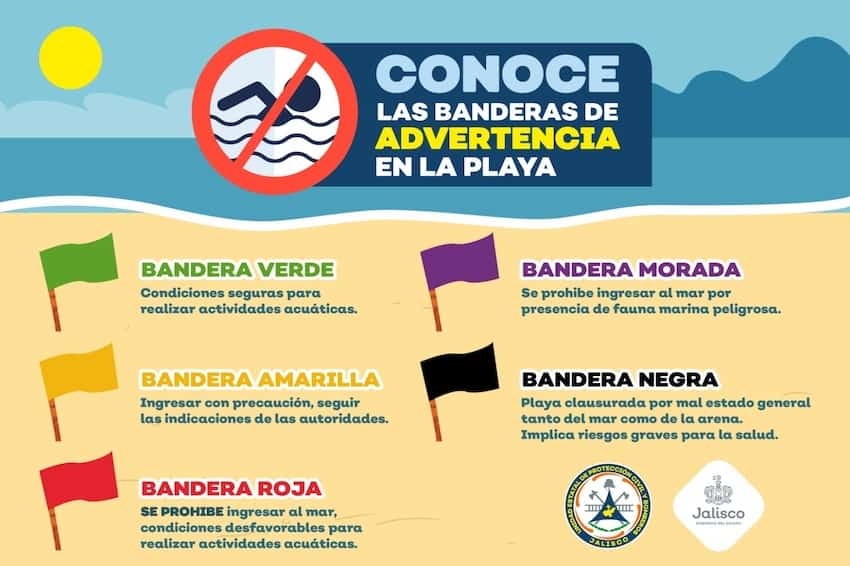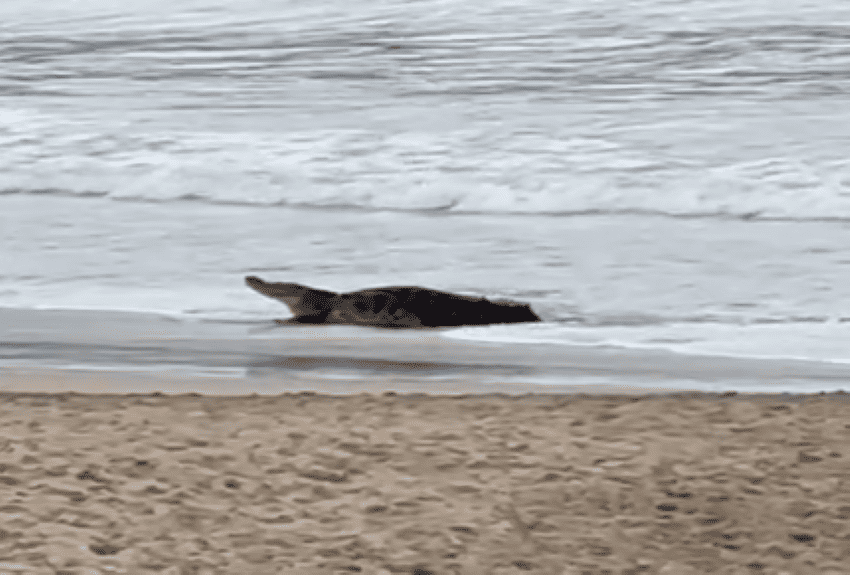Many short-term visitors to Puerto Vallarta this week haven’t been able to experience their dream beach vacations.
All of the city’s beaches have been conspicuously dotted by red flags to indicate “rough seas, stay out of the water” — and also by purple flags due to sightings of crocodiles.

The purple flags run from Playa del Holi to Playa del Oro. They were placed there after the presence of crocodiles was reported near the Puerto Vallarta malecón (seafront walk) and elsewhere.
The red flags were raised on authority of Civil Protection, Risk Management and Firefighter operations in Jalisco because of choppy seas or mar picado, characterized by the presence of higher and more frequent waves — usually irregular, fast and with sharp crests, generating strong currents and dangerous undertows.
The red flags mean it is prohibited to enter the sea, either to swim or just to have fun. The flags went up on Tuesday, and there are no media reports to suggest that they have been taken down as of early Thursday afternoon.
The mar picado phenomenon generally occurs due to adverse weather conditions over the ocean, such as strong winds and storms.
In addition, the area has been jostled by some recent crocodile incidents — including the appearance of a crocodile on the popular strip of beach between Playa del Holi and Playa del Oro.
Like many other beach areas in Mexico, nearby there are streams and rivers that serve as the crocodiles’ natural habitat. According to marine animal experts, the crocs use the ocean only as a byway to reach estuaries and freshwater ponds, where they like to hunt.
Biologist Helios Hernández, who is in charge of the Puerto Vallarta reptile house operated by the University of Guadalajara, told the newspaper El Financiero that the probability of a crocodile attacking a human is very low; they only do so when they feel that their space is invaded.
For months now, the appearance of crocodiles has been recorded along the municipality’s coastline.

One crocodile in particular is said to be seen regularly by tourists and merchants at the mouth of the Cuale River, under the bridge that overlooks the malecón. Locals have named him “Pancho,” and because he is usually stationary, he (or maybe she?) has become something of a tourist attraction.
Also, in the last week of December, a crocodile was captured wandering the streets of Marina Vallarta, an upscale planned development. Earlier that month, a shrimp fisherman had his arm taken off by a crocodile in the Ameca River, which feeds into the Pacific Ocean just north of Puerto Vallarta.
With reports from El Financiero and Informador
